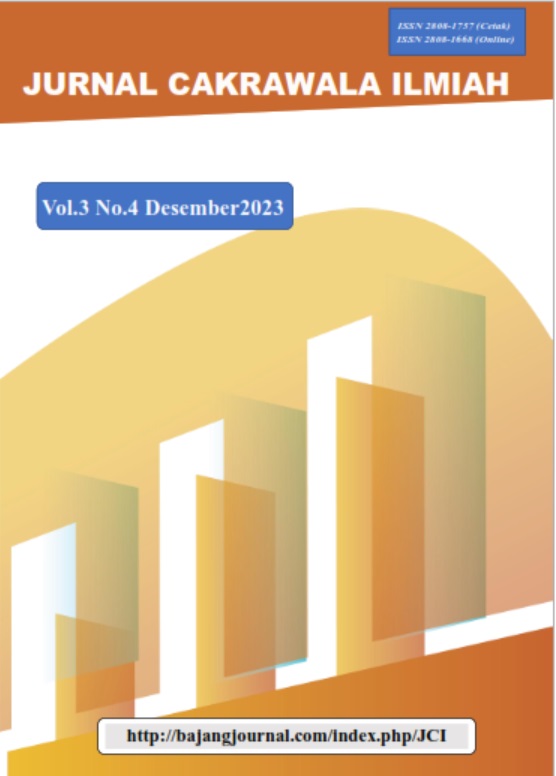PENGARUH PIJAT BAYI TERHADAP KENAIKAN BERAT BADAN PADA BBLR DI RSUD TAMAN HUSADA BONTANG
Keywords:
Baby Massage, BB Gain,, LBW, Nicu.Abstract
Background: LBW babies require special care because they experience various disorders such as body temperature instability, respiratory problems, immunological immaturity, gastrointestinal problems, nutrition, liver immaturity, and hypoglycemia. Premature babies are exposed to stressful environments, high-intensity noise, and continuous bright light. They lose the mechanical sensory stimulation they received in the womb. Massage can help facilitate the weight gain process. Objective: To identify the effect of baby massage on LBW weight gain in the Neonatology room at Taman Husada Bontang Regional Hospital. Method: This research is quantitative research with a quasi-experimental research design or also called quasi experiment. Pretest-Posttest with Control Group Design. The population in this study was LBW who were treated in the Neonatology room at Bontang Regional Hospital. Based on data obtained in January, the number of LBW babies was 16 babies, in February there were 10 babies, while in March there were 16 babies. If added up, there are 42 babies and on average every month around 13 babies are treated in the Neonatology room. This analysis was carried out using a paired t-test to see whether there was an effect of baby massage on increasing the baby's weight and body length. Results: The results of the study showed that the difference in the average increase in baby weight in the intervention group was 126.19 and in the control group was 37.62. The average difference in body weight between the intervention group and the control group was 163,810 and the difference was 101,545 to 226,074. The results of the independent t test obtained a Sig value. (2-tailed) is 0.000 < 0.05, then as is the basis for decision making in the independent t test, it can be concluded that H0 is rejected and Ha is accepted. Thus, it can be concluded that there is an influence of baby massage on LBW weight gain in the NICU room at Taman Husada Bontang Regional Hospital. Conclusion: There is an effect of giving baby massage 3 x 15 minutes for 10 days on increasing the weight of LBW neonates (p=0.000).
References
Doğan, E., Kaya, H. D., & Günaydin, S. (2023). The effect of massage on the bilirubin level in term infants receiving phototherapy. Explore, 19(2), 209–213. https://doi.org/10.1016/j.explore.2022.05.001
Elmoneim, M. A., Mohamed, H. A., Awad, A., El-Hawary, A., Salem, N., El helaly, R., Nasef, N., & Abdel-Hady, H. (2021). Effect of tactile/kinesthetic massage therapy on growth and body composition of preterm infants. European Journal of Pediatrics, 180(1), 207–215. https://doi.org/10.1007/s00431-020-03738-w
Fatmawati, N., Zulfiana, Y., & Pratiwi, Y. S. (2021). The Effect of Baby Massage on Improvement Baby Weight. Journal for Quality in Public Health, 4(2). https://doi.org/10.30994/jqph.v4i2.212
Hendy, A., El-Nagger, N. S., Abozeid, A., Reshia, F. A., Salih, S. A., Alruwaili, M. F., & Hendy, A. (2022). Outcome of abdominal massage before gavage feeding on tolerated feeding for low birth weight infants. Nursing Open, 9(2),1060–1065. https://doi.org/10.1002/nop2.1144
Khairunnisa, C., & Syifa Ghinanda, R. (2021). Hubungan Karakteristik Ibu Dengan Status Gizi Balita Usia 6-24 Bulan Di Puskesmas Banda Sakti Tahun 2021. Jurnal Pendidikan Tambusai.
Lai, M., D’Acunto, G., Guzzetta, A., Finnigan, S., Ngenda, N., Ware, R. S., Boyd, R. N., & Colditz, P. B. (2022). Infant massage and brain maturation measured using EEG: A randomised controlled trial. Early Human Development, 172. https://doi.org/10.1016/j.earlhumdev.2022.105632
Majid, R. K., & Rusmariana, A. (2022). Penerapan Pijat Bayi Terhadap Peningkatan Berat Badan Bayi Usia 1-3 Bulan: Literature Review. Prosiding Seminar Nasional Kesehatan, 1. https://doi.org/10.48144/prosiding.v1i.1043
Mrljak, R., Danielsson, A. A., Hedov, G., & Garmy, P. (2022). Effects of Infant Massage: A Systematic Review. Res. Public Health, 19, 6378. https://doi.org/10.3390/ijerph
Nasution, D., Nurdiati, D. S., & Huriyati, E. (2014). Berat badan lahir rendah (BBLR) dengan kejadian stunting pada anak usia 6-24 bulan. Jurnal Gizi Klinik Indonesia, 11(1), 31. https://doi.org/10.22146/ijcn.18881
Puji Lestari, K., Rahma Nurbadlina, F., & Jauhar, M. (2021). The effectiveness of baby massage in increasing infant’s body weight. In Journal of Public Health Research (Vol. 10, Issue s1).
Seiiedi-Biarag, L., & Mirghafourvand, M. (2020). The effect of massage on feeding intolerance in preterm infants: A systematic review and meta-analysis study. In Italian Journal of Pediatrics (Vol. 46, Issue 1). BioMed Central Ltd. https://doi.org/10.1186/s13052-020-0818-4
Suryani, E. (2020). Bayi Berat Lahir Rendah Dan Penatalaksanaannya Strada Press.
Uberos, J., Jimenez-Montilla, S., Machado-Casas, I., Laynez-Rubio, C., Fernández-Marin, E., & Campos-Martínez, A. (2022). The association between restricted intra-uterine growth and inadequate postnatal nutrition in very-low-birth-weight infants and their neurodevelopmental outcomes: a 50-month follow-up study. British Journal of Nutrition, 127(4), 580–588. https://doi.org/10.1017/S000711452100132X
Upadhyay, R. P., Taneja, S., Strand, T. A., Sommerfelt, H., Hysing, M., Mazumder, S., Bhandari, N., Martines, J., Dua, T., Kariger, P., & Bahl, R. (2022). Early child stimulation, linear growth and neurodevelopment in low birth weight infants. BMC Pediatrics, 22(1). https://doi.org/10.1186/s12887-022-03579-6
Downloads
Published
How to Cite
Issue
Section
License
Copyright (c) 2023 Jurnal Cakrawala Ilmiah

This work is licensed under a Creative Commons Attribution-NonCommercial 4.0 International License.
















